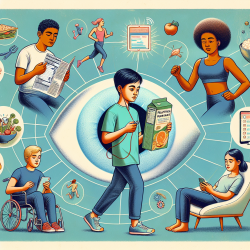Introduction
Homelessness among youth is a pressing issue in the United States, affecting approximately 1.7 million individuals. This demographic is particularly vulnerable to a range of adverse outcomes, including psychiatric disorders and substance use. The study "Psychiatric Disorders and Substance Use in Homeless Youth: A Preliminary Comparison of San Francisco and Chicago" provides crucial insights into these challenges, highlighting the need for targeted interventions.
Key Findings
The study compared psychiatric disorders and substance use among homeless youth in San Francisco and Chicago. The results revealed that:
- 87% of San Francisco youth and 81% of Chicago youth met criteria for at least one psychiatric disorder.
- Substance-related disorders were prevalent, with 84% of San Francisco youth and 48% of Chicago youth affected.
- Regional differences were noted, with San Francisco youth reporting a wider range of substance use.
Implications for Practitioners
For practitioners working with homeless youth, these findings underscore the importance of tailored interventions. Here are some strategies to consider:
- Regional Customization: Recognize that the needs of homeless youth may vary significantly by region. Tailoring interventions to address specific local challenges can enhance their effectiveness.
- Comprehensive Assessments: Use tools like the Mini International Neuropsychiatric Interview (M.I.N.I.) to accurately diagnose psychiatric disorders and substance use, ensuring that interventions are based on solid data.
- Collaborative Approaches: Engage with local organizations and stakeholders to create a network of support for homeless youth, leveraging community resources to address both immediate and long-term needs.
Encouraging Further Research
While this study provides valuable insights, it also highlights the need for further research. Practitioners are encouraged to participate in or initiate studies that explore:
- The impact of homelessness on the development of psychiatric disorders over time.
- Effective intervention strategies that can be implemented across different regions.
- The role of demographic factors such as age, gender, and ethnicity in shaping the experiences of homeless youth.
Conclusion
The high prevalence of psychiatric disorders and substance use among homeless youth is a call to action for practitioners. By leveraging research findings and engaging in further studies, we can develop more effective interventions that address the unique needs of this vulnerable population.
To read the original research paper, please follow this link: Psychiatric Disorders and Substance Use in Homeless Youth: A Preliminary Comparison of San Francisco and Chicago.










